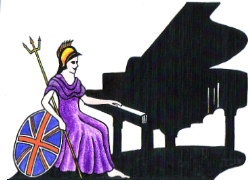Teachers, Accompanists and Piano Entertainers in the UK

UK Piano Page

Madbrook Farm
Warminster Road
Westbury, Wiltshire BA133RB
England
OVER 100 PIANOS IN STOCK ! Sales at our stores in
39 Finch Road
Douglas, Isle of Man IM12PW
England
Peter Norris Music has now been trading for 20
94 Kingston Road
Wimbledon
Merton, London SW19 1LA
England
131 Moneynick Road
Randalstown, County Antrim BT41 3HU
Northern Ireland
We Keep a wide range of upright and grand pianos
Grove House
Wade House Road. Shelf
Halifax, West Yorkshire HX3 7PF
England
GSG Pianos is one of the North of England’s
Music Festival for performers and guests Our 10th
18-06-2022 01:30PM
The Morecambe Bay Piano Group was set up to extend
11-12-2021 02:00PM
The Morecambe Bay Piano Group was set up to extend
08-01-2022 02:00PM
The Morecambe Bay Piano Group was set up to extend
12-02-2022 02:00PM